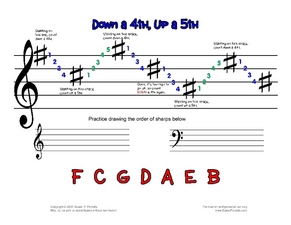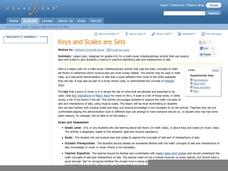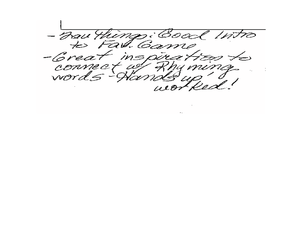Curated OER
Parallel Harmonies
What is a parallel harmony? You and your class can explore musical terminology through song. You define what a parallel harmony is, the class identifies parallel harmony in music they hear, and then you all sing some examples together....
Curated OER
Missing the Major Scales 2
Any musician can tell you, you have to know your scales, key signatures, and notes when reading sheet music. Kids are quizzed on major scales and the notes found with in each scale. They fill in the missing notes and identify each scale.
Curated OER
Independent Harmonies
Independent harmonies, homophonic music, intervals, and melody are all part of music theory and practice. Prepare your budding musicians for the big time with these activities focused on playing with accompaniment. This lesson is...
Curated OER
A Musical Composition Experience
Upper graders having skills in music performance will extend their abilities through creative musical composition. They'll use Finale 2000 to explore facets of music composition, they'll then compose a piece for their instrument in C, F,...
Curated OER
Down a 4th, Up a 5th
It's time to practice those sharps. Young musicians write the order of sharps by counting down a fourth and up a fifth. This is a great way to teach sharps to emergent musical note readers.
Curated OER
Keys and Scales are Sets
Music theory lessons can be very tricky for some people. Children with a basic understanding of musical concepts take on the task of transposing music and identifying scale sets. This would be a good topic to address prior to discussing...
Curated OER
A Pentatonic Scale Activity
The famous Japanese tune, "Cherry Blooms" was composed using a pentatonic scale. Budding musicians explore the nature and theory behind the pentatonic scale as well as the East Asian music it is commonly used in. Multiple extensions are...
Curated OER
Classroom Builder
Learners explore music theory by discussing a classic song. In this musical notation activity, students listen to the song "My Favorite Things" and discuss and share their personal tastes with the class. Learners practice writing notes...
Curated OER
Not Your Grandma's Music: A Lesson in Music History
Students experience and discuss the different musical periods such as Baroque, Classical and Romantic. In this music lesson, students discover musical theory and apply it to the Baroque, Classical, and Romantic periods. Students will...
Curated OER
J.S. Bach (1685-1750): Sarabande and Gigue form Partita no.4 in D major, BWV 828
Challenge your music students with this worksheet, which includes twenty-one questions about J.S. Bach's Sarabande and Gigue form Partita no.4 in D major, BWV 828. Students compare the two sections (bars 1-12, bars 13-38) by answering...
Curated OER
A Melody Activity
Students explore melody. In this music lesson, students define "melody" and identify the melody line present in increasingly complex musical pieces. Students sing or hum the melody line after listening to an excerpt of music.
Curated OER
Elements of Music
In this music worksheet, students learn 6 elements of music and match the names with the definitions. The elements are silence, pitch, texture, duration, dynamics, tempo and attack and decay.
Curated OER
The Space Between
Students explore major, minor and perfect intervals and watch the PowerPoint presentation "The Space Between." They identify the various intervals by sight and differentiate major, minor and perfect intervals. Students perform the...
Curated OER
Nosferatu Expression and Diminished Chords
Learners explore how to construct and play diminished triads and half and whole diminished chords on the keyboard. They create appropriate sounds to accompany sections of the movie "Nosferatu: A Symphony of Horrors." Students discuss the...















